《SENSATION AND PERCEPTION:AN INTEGRATED APPROACH THIRD EDITION》
| 作者 | HARVEY RICHARD SCHIFFMAN 编者 |
|---|---|
| 出版 | JOHN WILEY & SONS |
| 参考页数 | 555 |
| 出版时间 | 1990(求助前请核对) 目录预览 |
| ISBN号 | 0471610488 — 求助条款 |
| PDF编号 | 813642268(仅供预览,未存储实际文件) |
| 求助格式 | 扫描PDF(若分多册发行,每次仅能受理1册) |

1.INTRODUCTION1
STIMULATION2
SENSORY RECEPTORS2
SENSATION,PERCEPTION AND RELATED DISCIPLINES4
PLAN OF THE BOOK5
CLASSIFICATION OF MODALITIES6
WHY STUDY SENSATION AND PERCEPTION8
2.PSYCHOPHYSICS11
DETECTION AND THE ABSOLUTE THRESHOLD12
THEORY OF SIGNAL DETECTION15
SUBLIMINAL PERCEPTION20
THE DIFFERENTIAL THRESHOLD23
FECHNER’S LAW24
STEVENS’ POWER LAW25
THE RELATIVITY OF PSYCHOPHYSICAL JUDGMENTS28
SUMMARY29
3.THE ORIENTING SYSTEM31
THE MAMMALIAN ORIENTING SYSTEM33
Vestibular Stimulation35
Vestibular Nystagmus37
OculogyralIllusion37
Visually Induced Illusions of Motion38
Vestibular Adaptation and Habituation39
Deficiencies of the Vestibular Mechanism39
Other Mechanisms for Orientation41
Motion Sickness41
SUMMARY43
4.THE AUDITORY SYSTEM47
THE PHYSICAL STIMULUS48
Frequency48
Amplitude49
Complexity53
Resonance54
Phase55
ANATOMY AND MECHANISMS OF THE EAR55
The Outer Ear56
The Middle Ear58
The Inner Ear58
The Auditory Nerve60
Bone Conduction61
FUNCTIONING OF THE INNER EAR63
The Place Theory63
The Frequency Theory66
AUDITORY PATHOLOGY67
Tinnitus67
Presbyacusis67
Hearing Loss68
COMPARATIVE AUDITORY STRUCTURES70
SUMMARY72
5.COMPLEX AUDITORY PHENOMENA Ⅰ:PSYCHOACOUSTICS75
PERCEPTION OF INTENSITY76
Intensity Discrimination77
Loudness77
Loudness and Frequency77
PERCEPTION OF FREQUENCY80
Frequency Discrimination80
Pitch80
Pitch and Intensity81
HEARING AND TEMPORAL EFFECTS81
EFFECTS OF MULTIPLE TONAL STIMULATION82
Beats82
Combination Tones83
Masking83
Sound-Induced Hearing Loss (Auditory Fatigue and Adaptation)85
SUBJECTIVE TONAL ATTRIBUTES86
Volume and Density86
Consonance87
SUMMARY87
6.COMPLEX AUDITORY PHENOMENA Ⅱ:SOUND AS INFORMATION89
CEREBRAL DOMINANCE AND HEARING90
AUDITORY SPACE PERCEPTION93
Monaural Cues93
Binaural Cues93
Echolocation98
Obstacle Perception by the Blind99
THE PERCEPTION OF MUSIC101
Acoustic Dimensions of Music101
Octaves,Musical Notation and Scales101
Absolute or Perfect Pitch103
Perception of Pitch Sequences:Melodies103
Temporal Organization104
Chromesthesia and Music104
Function of Music Perception105
THE PERCEPTION OF SPEECH105
Speech Sounds107
SPEECH PERCEPTION WITH SOUND DISTORTION108
Frequency Cutoffs108
Context109
Speech Blanking109
Segmented Speech110
THEORIES OF SPEECH PERCEPTION110
Motor Theory of Speech Perception110
Linguistic Feature Detectors112
Speech Mode of Perception113
ANIMAL COMMUNICATION114
SUMMARY115
7.SOMESTHESIS Ⅰ:KINESTHESIS AND CUTANEOUS SENSE119
KINESTHESIS120
THE SKIN AND CUTANEOUS EXPERIENCE120
Distribution of Cutaneous Sensitivity122
THE SKIN AND THE BRAIN123
Receptive Fields123
PRESSURE AND TOUCH125
Thresholds for Pressure126
Point Localization for Pressure127
Two-Point Threshold127
Aristotle’s Illusion128
Adaptation to Pressure129
COMPLEX TOUCH PHENOMENA130
Reading with the Skin130
The Todoma Method132
Pressure Phosphenes132
Seeing with the Skin133
THE HAPTIC SYSTEM135
Tactual Stereognosis135
Roughness Enhancement136
SUMMARY136
8.SOMESTHESIS Ⅱ:TEMPERATURE AND PAIN139
TEMPERATURE140
Thermal Adaptation140
Temperature Discrimination142
Paradoxical Thermal Sensations142
THEORIES OF THERMAL PERCEPTION143
PAIN144
Function of Pain Perception144
Pain Due to Overstimulation145
The Nociceptor146
The Qualities of Pain146
The Pain Stimulus and Pain Thresholds146
Subjective Factors in Pain Experience147
Pain Adaptation148
THEORIES OF PAIN148
Spinal Gate Control TheoRY of Pain148
Acupuncture151
Endorphins and Enkephalins151
SUMMARY152
9.THE CHEMICAL SENSORY SYSTEM Ⅰ:TASTE155
THE CHEMICAL STIMULUS AND TASTE EXPERIENCE157
The Chemical Stimulus for Taste158
ANATOMY OF TASTE RECEPTION158
THRESHOLDS OF TASTE160
Taste Thresholds and Genetics162
Scaling of Taste Intensity162
Taste Abnormalities and Disease163
ADAPTATION163
Adaptation-Produced Potentiation164
Cross-Adaptation164
TASTE INTERACTIONS164
TASTE MODIFIERS165
NEURAL RECORDING165
Cross-Fiber Patterning166
THE BEST STIMULUS AND LABELED LINES:TASTE RECEPTOR SPECIFICITY167
TASTE PREFERENCES AND TASTE WORLDS168
Taste Preference and Deprivation169
Origins of Taste Preferences169
Conditioned Taste Aversion169
Culture and Taste Preferences170
Taste Preference and Flavor170
SUMMARY171
10.THE CHEMICAL SENSORY SYSTEM Ⅱ:SMELL175
CHEMICAL CORRELATES OF ODOR QUALITY177
CLASSIFICATION OF ODOR QUALITY177
Stereochemical TheoRY:Lock and Key177
ANATOMY AND PHYSIOLOGY OF THE OLFACTORY SYSTEM179
Plasticity of the Olfactory System181
Olfactory Coding181
THRESHOLDS182
Thresholds and Gender183
Thresholds and Age184
ADAPTATION185
ODOR MIXTURES185
ODOR PREFERENCES185
IDENTIFICATION AND MEMORY OF ODORS186
Odors and Emotion187
OLFACTORY DISORDERS188
THE ODOR OF DISEASE188
PSYCHOBIOLOGICAL FUNCTIONS OF OLFACTION:PHEROMONES188
The Vomeronasal System190
Human Pheromones190
COMMON CHEMICAL SENSE191
Effective Stimulus for the Common Chemical Sense192
Preference for Irritating Trigeminal Stimuli192
SUMMARY193
11.THE VISUAL SYSTEM196
THE PHYSICAL STIMULUS198
Wavelength199
Intensity199
Reception200
ANATOMY OF THE VERTEBRATE EYE202
The Retina206
Eyeball Mobility208
Placement of the Eyes and the Visual Field210
ACCOMMODATION210
REFRACTIVE ERRORS211
Myopia213
Lens Aberrations214
Astigmatism215
PUPIL MOBILITY215
Pupillometry217
EYEBLINKS217
EYE AND BRAIN217
Receptive Fields218
Receptive Fields for the Visual Cortex220
SUMMARY224
12.FUNDAMENTAL VISUAL FUNCTIONS AND PHENOMENA227
SCOTOPIC AND PHOTOPIC VISION228
ADAPTATION228
The Photochemical Basis of Dark Adaptation229
Spectral Sensitivity and the Purkinje Shift230
LIMITS OF BASIC VISUAL FUNCTION232
Absolute Threshold for Intensity232
Factors Affecting the Absolute Threshold233
Perceiving Continuity from Intermittent Light:The CFF233
ACUITY234
Visual Angle236
Acuity and Retinal Locus238
Additional Factors239
EYE MOVEMENTS240
Saccades240
Saccades and Reading240
Pursuit Movements243
Vergence Movements243
Miniature Eye Movements243
Mixed Mode Eye Movements243
Development of Efficient Eye Movements243
SUMMARY244
13.THE PERCEPTION OF COLOR247
THE NATURE OF COLOR248
Color Spindle250
COLOR MATCHING251
COLOR MIXTURE251
Additive Color Mixture252
Subtractive Color Mixture254
AFTERIMAGES255
Successive and Simultaneous Contrast255
MEMORY COLOR256
THEORIES OF COLOR PERCEPTION256
The Young-Helmholtz Theory (Trichromatic Receptor Theory)257
Opponent-Process Theory258
Color Coding Beyond the Retina259
Ladd-Franklin Theory262
DEFECTIVE COLOR VISION262
Anomalous Trichromatism263
Dichromatism263
Monochromatism264
Cortical Color Blindness264
SUBJECTIVE COLORS265
SUMMARY266
14.THE PERCEPTION OF FORM AND SHAPE269
CONTOUR AND CONTRAST PERCEPTION270
Border Contrast,Lateral Inhibition,and Mach Bands272
Lightness Contrast273
Hermann Grid274
The Ganzfeld:Perception in a Homogeneous Field275
Stabilized Image276
SPATIAL FREQUENCIES278
Contrast Sensitivity Function278
Selective Adaptation281
Image Processing:Block Portraits282
Spatial Frequency and Acuity282
Role of Spatial Frequency Analysis in Vision283
FIGURE-GROUND DIFFERENTIATION285
Ambiguous Figure-Ground Relationships285
Perceptual Differences between Figure and Ground288
Figure-Ground and Lightness288
Figure-Ground and Perceptual Organization290
GESTALT GROUPING PRINCIPLES291
Nearness or Proximity292
Similarity292
Good Configuration292
Measures of Grouping Effects293
Subjective Contours295
Law of Pragnanz299
MASKING300
Masking and Saccadic Omission301
Facilitative Interaction302
AFTEREFFECTS303
Figural Aftereffects303
Shape Affereffects303
Contingent Affereffects305
PERCEPTUAL SET306
FIGURAL ORIENTATION AND FORM PERCEPTION308
SUMMARY309
15.THE PERCEPTION OF MOVEMENT315
MOVEMENT SYSTEMS OF THE EYE317
The Image-Retina Movement System317
Eye-Head Movement System318
Corollary Discharge and Outflow Signals318
THE PATTERN OF OPTICAL STIMULATION FOR MOVEMENT PERCEPTION319
Kinetic Optical Occlusion319
Optic Flow Patterns320
Visual Field321
Thresholds for Movement321
BIOLOGICAL MOTION321
DISTORTIONS IN THE PERCEPTION OF MOVEMENT323
Motion-Produced Depth:Kinetic Depth Effect323
Anorthoscopic Perception323
Induced Movement324
Pulfrich Effect326
APPARENT MOVEMENT328
Stroboscopic Movement328
Motion Pictures329
Autokinetic Movement330
Movement Aftereffects330
THE PREDICTION OF MOTION PATHS331
SUMMARY334
16.THE PERCEPTION OF SPACE Ⅰ:SPATIAL CUES AND CONSTANCY337
MONOCULAR CUES FOR SPATIAL PERCEPTION338
Interposition338
Aerial Perspective or Clearness338
Shading and Lighting339
Elevation340
Linear Perspective341
Texture Gradients342
Relative Size343
Pictorial Perception344
Motion Parallax347
Motion Perspective350
Familiar Size350
Accommodation352
Scene Perception352
Gibson’s Direct Approach to the Perception of Depth and Distance353
BINOCULAR CUES354
Convergence354
Binocular Disparity354
Corresponding Retinal Points and the Horopter356
Stereopsis357
Cyclopean Perception358
THE VISUAL CLIFF361
CONSTANCY362
Lightness Constancy363
Size Constancy365
Shape Constancy368
SUMMARY371
17.THE PERCEPTION OF SPACE Ⅱ:ILLUSIONS375
TRANSACTIONALISM AND THE AMES ILLUSIONS376
The Trapezoidal Window377
The Distorted Room378
THE HORIZONTAL-VERTICAL ILLUSION380
THE MOON ILLUSION381
Angle-of-Regard Hypothesis381
Apparent Distance Hypothesis381
Relative Size Hypothesis383
THE MULLER-LYER ILLUSION384
THE PONZO ILLUSION386
THE POGGENDORFF ILLUSION389
The Poggendorff Illusion and Perspective Constancy390
The Poggendorff and Muller-Lyer Illusion391
OTHER ILLUSIONS393
THEORETICAL CONSIDERATIONS393
Multiple Determinants of Illusions394
Multiple Illusion Figures397
AMBIGUOUS,REVERSIBLE,AND MULTISTABLE FIGURES398
IMPOSSIBLE FIGURES400
SUMMARY403
18.THE DEVELOPMENT OF PERCEPTION405
DEVELOPMENT OF THE SENSORY SYSTEM406
Cortical Effects of Restriction407
Cortical Effects of Biased and Selective Visual Stimulation407
Restriction and Restoration of Vision with Humans408
DEVELOPMENT OF THE PERCEPTION OF SPACE410
Depth Perception410
Development of Object Avoidance:Looming411
PERCEPTION OF THE NEWBORN HUMAN412
Auditory-Visual Events413
Eye Fixations and Scanning413
Form Perception415
Color Perception418
DEVELOPMENT OF VISUAL ACUITY419
The Oblique Effect419
VISION AND AGING420
The Eye and Aging420
Visual Acuity and Aging421
Retinal Effects of Aging421
CONCLUSIONS422
SUMMARY422
19.THE DEVELOPMENT OF PERCEPTUAL-MOTOR COORDINATION425
PERCEPTUAL-MOTOR COORDINATION425
Visually Guided Behavior:Visual Placing427
PERCEPTUAL ADAPTATION TO DISTORTED OPTICAL STIMULATION429
Reafference431
Active Movements and Adaptation432
Comparative Studies433
Active versus Passive Movement435
SUMMARY435
20.THE PERCEPTION OF TIME437
BIOLOGICAL BASIS OF TIME PERCEPTION438
Hoagland’s Hypothesis:The Biological Clock438
Time Perception and the EEG440
Drugs440
COGNITIVE THEORIES OF TIME PERCEPTION441
Ornstein’s Theory:Information Storage441
Number of Events441
Complexity442
Task Familiarity443
Organization and Memory443
Cognitive-Attentional Theory444
Biological Versus Cognitive Basis of Time Perception445
TIME PERCEPTION AND SPATIAL SCALE446
TIME PERCEPTION AND SPATIAL EVENTS:THE TAU- AND KAPPA-EFFECTS447
SUMMARY448
21.SENSATION,PERCEPTION,AND ATTENTION:SELECTED TOPICS451
SELECTIVE ATTENTION452
Divided Attention452
Visual Search454
DUAL PROCESSING:SIMULTANEOUSLY RESPONDING TO MULTIPLE INPUTS457
Controlled and Automatic Processes457
The Stroop Effect458
Dual Attention459
VISUAL MEMORY:THE ICON460
VISUAL IMAGERY461
SUMMARY462
GLOSSARY465
REFERENCES493
AUTHOR INDEX537
SUBJECT INDEX547
1990《SENSATION AND PERCEPTION:AN INTEGRATED APPROACH THIRD EDITION》由于是年代较久的资料都绝版了,几乎不可能购买到实物。如果大家为了学习确实需要,可向博主求助其电子版PDF文件(由HARVEY RICHARD SCHIFFMAN 1990 JOHN WILEY & SONS 出版的版本) 。对合法合规的求助,我会当即受理并将下载地址发送给你。
高度相关资料
-

- SENSATION AND PERCEPTION THIRD EDITION
- 1992 ALLYN AND BACON
-

- Perception : an approach to personality
- 1951 Ronald Press
-
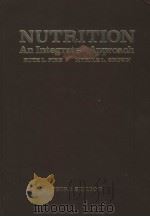
- NUTRITION AN INTEGRATED APPROACH THIRD EDITION
- 1984年 JOHN WILEY & SONS
-
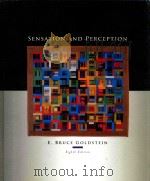
- Sensation and Perception
- 1996 Thomas Kinkade
-

- CELL STRUCTURE & FUNCTION:AN INTEGRATED APPROACH THIRD EDITION
- 1991 SAUNDERS COLLEGE PUBLISHING
-
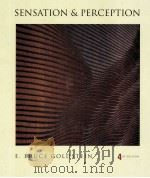
- SENSATION AND PERCEPTION FOURTH EDITION
- 1996 BROOKS/COLE PUBLISHING COMPANY
-
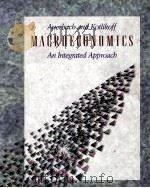
- MACROECONOMICS AN INTEGRATED APPROACH
- 1994 SOUTH-WESTERN COLLEGE PUBLISHING
-

- SENSATION AND PERCEPTION:AN INTEGRATED APPROACH THIRD EDITION
- 1990 JOHN WILEY & SONS
-
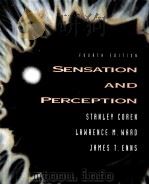
- SENSATION AND PERCEPTION FOURTH EDITION
- 1994 HARCOURT BRACE COLLEGE PUBLISHERS
-
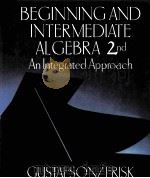
- BEGINNING AND INTERMEDIATE ALGEBRA AN INTEGRATED APPROACH
- 1999 BROOKS/COLE PUBLISHING COMPANY
-
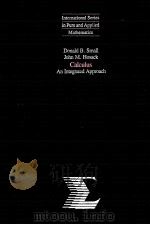
- CALCULUS AN INTEGRATED APPROACH
- 1990 MCGRAW-HILL
-
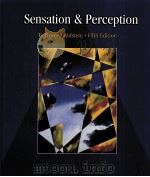
- SENSATION AND PERCEPTION FIFTH EDITION
- 1999 BROOKS/COLE PUBLISHING COMPANY
提示:百度云已更名为百度网盘(百度盘),天翼云盘、微盘下载地址……暂未提供。➥ PDF文字可复制化或转WORD


